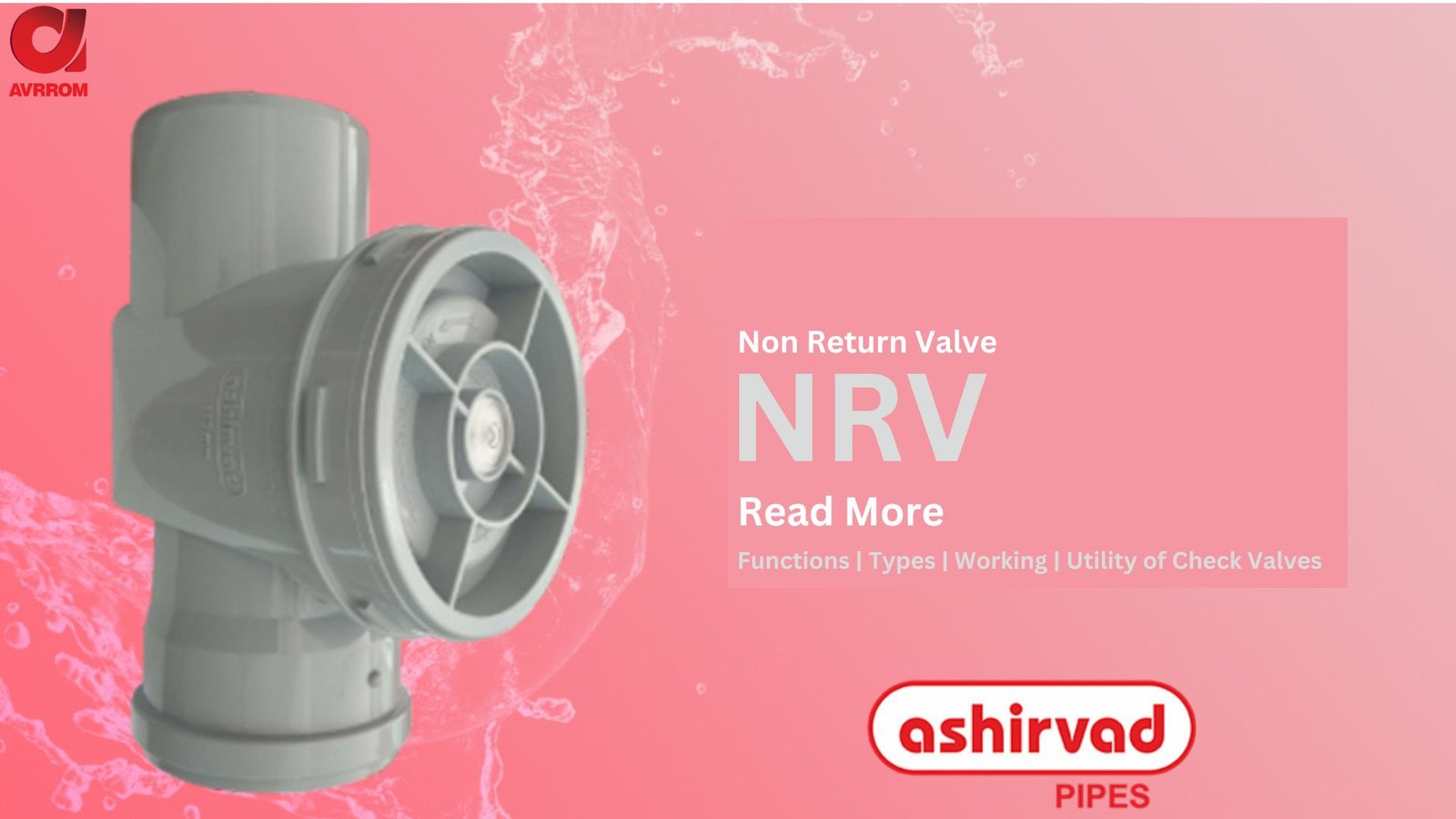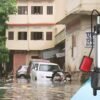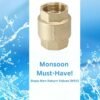
Monsoon ready tips: Preparing your plumbing system for the monsoon involves several important steps to ensure it remains efficient and problem-free during heavy rains. Here are some tips:
- Inspect and Clean Gutters and Downspouts: Ensure gutters and downspouts are clear of debris like leaves and twigs to prevent clogging. Clogged gutters can cause water overflow, leading to potential water damage to your home’s foundation and basement.
- Inspect Outdoor Drainage: Check and clear any outdoor drains, such as trench drains, that help divert water away from your home’s foundation. Ensure they are free of debris and properly functioning.
- Inspect and Seal Pipe Penetrations: Check for any gaps or cracks around pipes where they enter your home or walls. Seal these penetrations to prevent water from entering your home during heavy rains.
- Consider Installing a Backwater Valve: In areas prone to sewer backups during heavy rains, installing a backwater valve can prevent sewage from backing up into your home’s drains. It allows sewage to flow out but prevents it from coming back in during flooding.
By following these monsoon ready tips, you can help ensure your plumbing system is ready to handle the challenges posed by the monsoon season effectively.
The Backwater Valve: Crucial Monsoon Ready Tips
As the monsoon season approaches, the importance of Non-Return Valves (NRVs) becomes paramount in managing water flow and preventing backflow in drainage and plumbing systems. NRVs are simple yet crucial devices designed to allow the flow of water in one direction while preventing its reversal. Let’s delve into the types, functions, and working of NRVs, highlighting their increased utility during the monsoon season.
Types of Non-Return Valves:
- Swing Check Valve: This type of NRV consists of a hinged flap that swings open in the direction of water flow and closes to prevent backflow. It is commonly used in residential and commercial plumbing applications.
- Lift Check Valve: The lift check valve operates using a disc that lifts away from the seat to allow water flow and closes to prevent backflow. It finds application in various industries, including water treatment and irrigation systems.
- Diaphragm Check Valve: This type of NRV uses a flexible diaphragm to control water flow and prevent backflow. It is often used in low-pressure applications and small-diameter pipes.
- Stop-Check Valve: Combining features of stop valves and check valves, this type allows flow control while also preventing backflow. It is used in applications where periodic stopping of flow is required.
Functions of Non-Return Valves:
NRVs serve essential functions in different systems and applications:
- Preventing Contamination: In plumbing systems, NRVs prevent contaminated water from flowing back and mixing with the clean water supply. This ensures safe and hygienic water usage. This is one of the major monsoon ready tips for any infrastructures plumbing system.
- Protecting Pumps and Equipment: In pump systems, NRVs prevent backflow, reducing the risk of damage to pumps and associated equipment due to water hammer or reverse flow.
- Avoiding Flood Risk: In drainage systems, NRVs eliminate the risk of surface water backflow during heavy rains, preventing flooding and waterlogging in homes and buildings.
- Maintaining Pressure: NRVs help maintain steady pressure in pipelines by preventing the backflow of water, ensuring efficient operation and reducing the strain on the system during the flooding.
Working of Non-Return Valves:
The working principle of NRVs is relatively simple. When water flows in the desired direction, the valve opens, allowing unrestricted passage. However, when there is an attempt at backflow, the valve promptly closes, preventing any further water movement in the opposite direction.
Swing check valves use gravity to swing open and shut, lift check valves use pressure to lift the disc off the seat, diaphragm check valves utilize the flexibility of the diaphragm, and stop-check valves have a manual mechanism to control flow.
Utility of Non-Return Valves During Monsoon Season:
The monsoon season brings heavy rainfall and increased water flow, posing challenges for drainage and plumbing systems. The utility of NRVs becomes even more evident during this time:
- Preventing Water Backflow: In areas prone to flooding, NRVs play a crucial role in preventing water from flowing back into buildings and underground drainage systems. This ensures that water is efficiently directed away from the property.
- Minimizing Contamination: During heavy rainfall, there is an increased risk of water contamination. NRVs in the water supply lines prevent any contaminated water from flowing back into the clean water system.
- Maintaining System Efficiency: NRVs help maintain the efficiency of pumps and drainage systems by preventing water hammer and backflow, reducing the strain on equipment and ensuring smooth operation.
Non-Return Valves (NRVs) are vital components in plumbing and drainage systems, serving to prevent backflow and ensure the smooth and safe flow of water.
During the monsoon season, the importance of NRVs becomes even more evident as they play a crucial role in preventing water contamination, minimizing flood risk, and maintaining system efficiency. Thus it is the best monsoon ready tips that your plumber can suggest! These simple yet indispensable devices safeguard properties, protect equipment, and help maintain a hygienic and efficient water management system. So, whether it’s preventing contaminated water from entering the clean water supply or safeguarding against the risk of flooding, NRVs prove to be an essential tool during the monsoon season and beyond.
Where to buy NRVs?
Avrrom– Best place to buy NRVs and other plumbing fittings online in India at competitive prices. (Customer Review)







